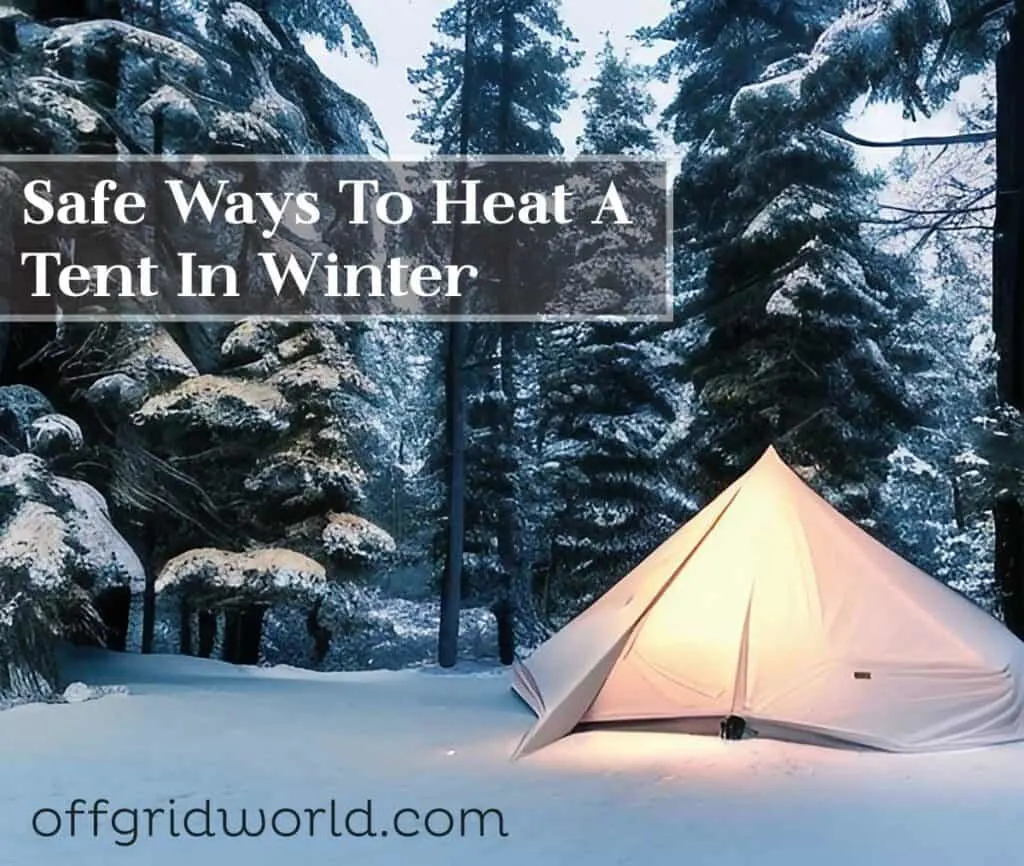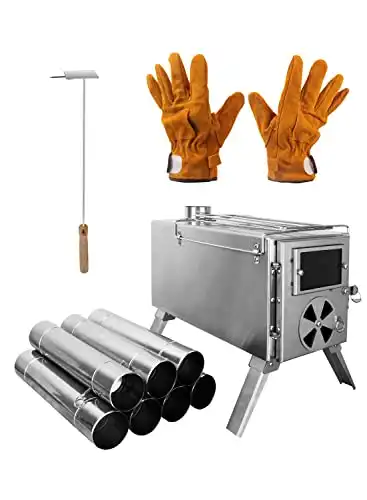If you’re planning a camping trip, chances are you’re looking forward to getting back to nature and enjoying all that the great outdoors has to offer. But what if you’re camping in cold weather? While this might sound like unnecessary punishment to some, there are several scenarios where hunters and outdoor enthusiasts end up camping out on cold fall and winter nights – and some even enjoy it! 😉
Cold weather tent camping brings its own set of challenges, including how to keep your tent warm at night. Remember that tents are generally very poor insulators, so heating them is not easy, but not impossible.
Whether you have access to power or not, you’ll want to stay cozy and comfortable, so here are some ideas to consider for tent heating, with and without electricity:
Heating With Electricity
If you’ll be camping completely off grid, you won’t be worrying much about electricity. But if you have access to power, there are a couple of simple heating solutions you can consider.
You might wonder how you’ll find an electric hookup while camping, but it isn’t too difficult. Some campgrounds or RV parks offer electric hookups, or you can generate electricity with a generator.
Maybe your first thought about generators is the same as mine: they’re way too noisy and inefficient to take camping. But after talking it over with my dad (who’s been an avid outdoorsman for decades), I was assured there are several models available now that are surprisingly fuel-efficient and quiet. He recommended the Honda models for their reliability, efficiency, and low noise.
- Advanced carbon monoxide detection
- Bluetooth capable with smartphone app
- Lightweight and compact
- Commercial grade reliability
You’ll have to ensure a generator is allowed where you’ll be camping, but if you can pack one, it can be a great choice for heating and other uses. We believe a generator is a good thing to have on hand for emergencies, whether you use it for camping or not.
Electric heaters
One of the easiest and most popular ways to heat a tent is a small electric space heater. These portable heaters are typically efficient enough to create a cozy atmosphere in a small tent, and if you’re insulated well enough, you’ll probably only have to run them intermittently.
In larger tents, space heaters will likely only provide a little extra heat on the coldest nights but can still kick out enough warmth to keep the chill at bay.
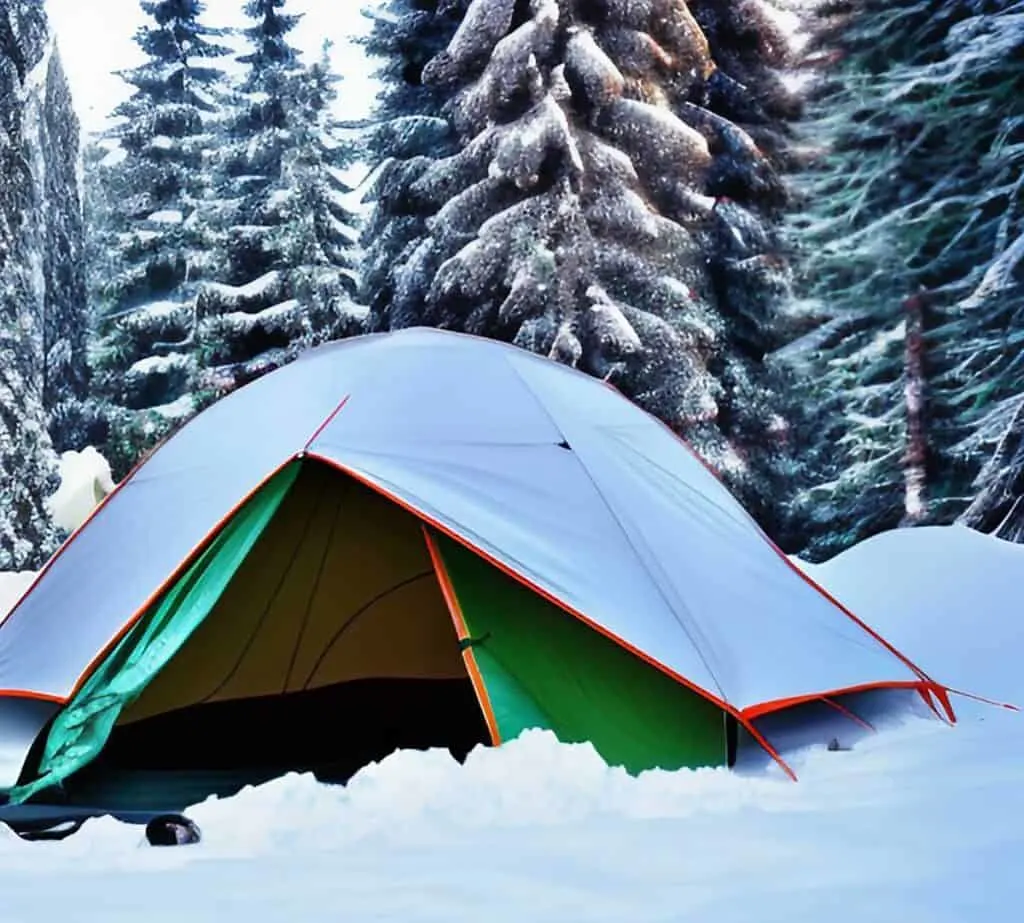
Space heaters come in two types: convection, which uses a fan to blow hot air into a room, and radiant heaters, which heat objects in front of them. Air-blowing heaters are the most common, but they tend to be louder and take longer than radiant heaters to warm a tent.
Electric radiant heaters radiate heat directly into the area you want to warm. You can find these types of heaters specifically designed for tents, but they are usually less efficient than other space heaters. They are typically better than convection heaters for warming larger spaces.
If you opt for electric heat, be sure you only use a portable heater designed for indoor use and don’t leave it running when you’re not in the tent. It should also be kept a safe distance from bedding or other flammable materials.
There are tons of space heaters available in all shapes and sizes. We have had a few occasions where we have had to run space heaters overnight to keep our greenhouse from freezing. After (frustratingly) going through several models of fan heaters and a couple of radiant heater models, the one that has consistently performed the best for us is the Honeywell 360-degree heater.
- Programmable Digital Thermostat
- 70°oscillating
- Tip-over Switch, Overheat Protection
The electric tent heater that will work best for you will depend on many things, including your tent size, the type of tent, and whether or not you have it insulated in some way. Insulating and heating a small space is much easier than in larger tents, so you may need to use a combination of a couple of different heating methods if you have anything bigger than a 1- or 2-person tent.
Electric blankets
While they don’t heat your entire tent, electric blankets are a great way to keep your sleeping bag warm without relying on heaters or other devices that could create a fire hazard inside your tent. Just plug in the blanket before bedtime, wrap it around yourself like a cocoon, and drift off into dreamland!
Heating Without Electricity
If you don’t have a generator or will be camping in the deep woods, electric access could be hard to come by. But there are still plenty of options for staying warm inside your tent.
Hot water bottles
It may sound old-fashioned, but hot water bottles can be an efficient way to stay warm on cold nights in the wilderness. Water has excellent thermal mass properties, meaning it can store and slowly release heat over an extended period.
You’ll likely have a way to heat water, either over a fire outside your tent or a cookstove. Carefully pouring hot water into bottles or jugs and placing them near you or inside your sleeping bag can provide hours of comfort throughout the night. This works best with good-quality, thick plastic jugs or bottles.
Alternatively, an insulated thermos filled with hot liquid (like tea) can provide warmth when placed inside your sleeping bag overnight.
Some cookstoves and woodstoves also have the option of an attached metal water container that can provide some passive heat while giving you a nice, convenient hot water supply at the ready.
Wood stoves
This is my favorite way to stay warm at night while tent camping. A small wood-burning stove can be placed inside your tent and will radiate cozy heat throughout the night, as long as you keep it fed with firewood. There’s nothing quite like heat from a wood stove on a cold winter night!
Be sure to follow all safety recommendations when using a wood stove, including keeping it a safe distance from tent walls and other flammable objects. Because of their size and the fact they require a stove pipe, wood stoves typically work best in larger tents.
Our family has a large canvas wall tent that has endured many fall and winter camping trips. We use a wood stove inside the tent that keeps it nice and warm while also providing a place to heat water.
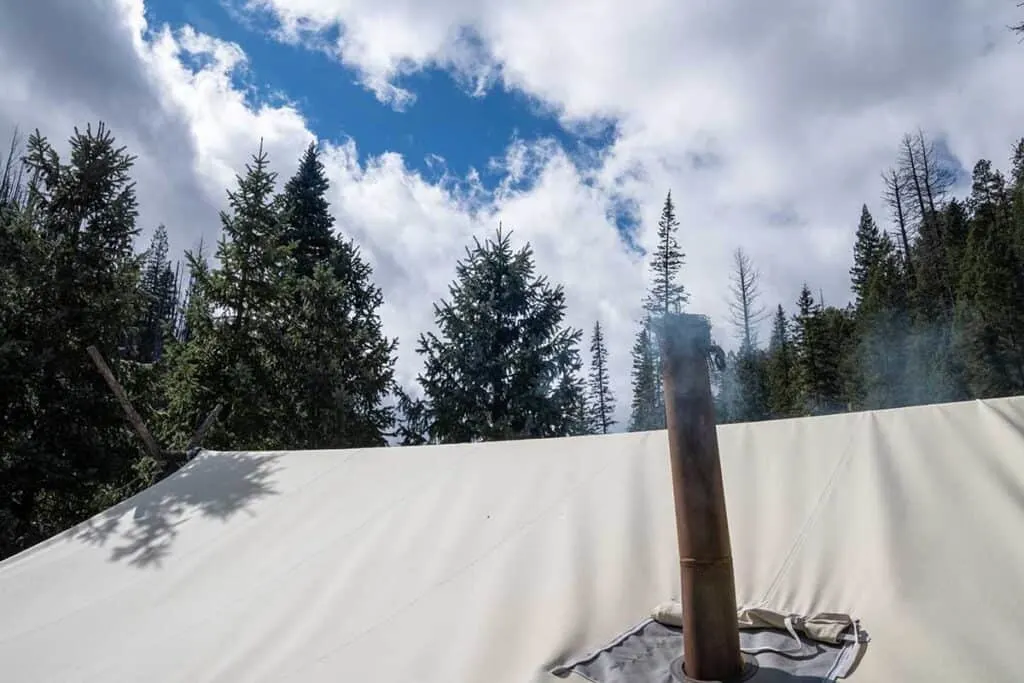
Wood stoves can be bulky and messy, and they need to be continually fed throughout the night as the wood burns down, so you’ll have to either haul firewood with you to your camping spot or make sure there is enough available around your campsite.
Despite the relative inconveniences, you’ll have a hard time talking me out of the comforts of a nice, cozy wood stove fire inside the tent on cold nights.
- Folding legs for portability
- Durable steel frame and high temperature resistant paint
- 57 chimney pipes with a diameter of 2.36 inches
Hot stones
Like hot water bottles, rocks heated over a fire retain heat and release it over time. They tend to lose heat faster than water but can still provide much-needed warmth inside your tent or sleeping bag.
To use this method, heat several large stones over your campfire for an hour or two to make sure they are warm to the core. Then wrap them in old blankets or other tough cloth (don’t burn yourself!), and bring them into your tent. Pile them around the edges of your tent or near your sleeping space and they’ll release their heat throughout the night.
Since you’ll be heating rocks found on site, this can be an excellent option for heating smaller tents without having to pack a bunch of extra gear.
Chemical heating pads
These are a bit of a last resort option for camping in really cold temperatures but chemical heating pads can be quite effective when used properly. You’ve probably seen the small versions of these used as hand warmers. Chemical heating pads rely on an exothermic reaction to generate heat and can be used inside your sleeping bag to provide additional warmth.
Most chemical heating pads can be recharged by boiling them in water for a few minutes. Be sure to follow the instructions carefully when using these pads, as improper use could lead to burns or other injuries.
Gas tent heaters
While some people use gas heaters for camping, we don’t recommend them because of the potential dangers. Some of these heaters do come equipped with safety features such as an oxygen depletion sensor, but this alone will not protect you from carbon monoxide poisoning.
If you do decide to use a gas heater, do so only in tents with proper ventilation. Carbon monoxide is a real concern when using a gas heater inside a tent. In addition to adequate ventilation, you should always have a carbon monoxide detector nearby to keep yourself safe if using gas heat sources.

Tips for retaining heat inside your tent
One of the most important ways to maximize comfort when winter camping is to be prepared with warm clothes, good camping gear, and simple materials to help insulate your tent.
Insulation
An insulated tent can make a world of difference if you want to retain as much heat as possible. This doesn’t mean you have to buy an expensive tent; insulation can be accomplished in several ways. Heavy tarps can be great insulators, especially if you use dark-colored tarps that absorb heat during the day.
Insulated concrete blankets have also been used by winter campers to help keep their tents warm. These are multi-layered tarps that are heavy, weather-resistant, and waterproof. Designed to retain heat over freshly-poured concrete, they are usually darker on one side for maximum daytime heat absorption. Covering your tent in one can make a big difference in how much heat escapes through your tent ceiling.
Another important piece of camping equipment to keep on hand is a tent mat or pad to lay under your sleeping bag as an insulator between you and cold ground. Tons of heat can be lost through frozen ground, so this is a simple but often overlooked item. For extra warmth, you can get a heated pad.
Keep in mind as you embark on your winter camping adventure that snow is an excellent insulator. If you have snow on top of your tent, it may be a good idea to let it stay there as an extra layer of insulation. Only do this if you have a waterproof tent cover in case the snow starts to melt.
Finally, if you are camping in a group, you can utilize body heat from one another as an additional source of warmth. The reason we put this under insulation is because people generate a lot of body heat when gathered in a space together, but you’ll need a way to retain that heat to make use of it.
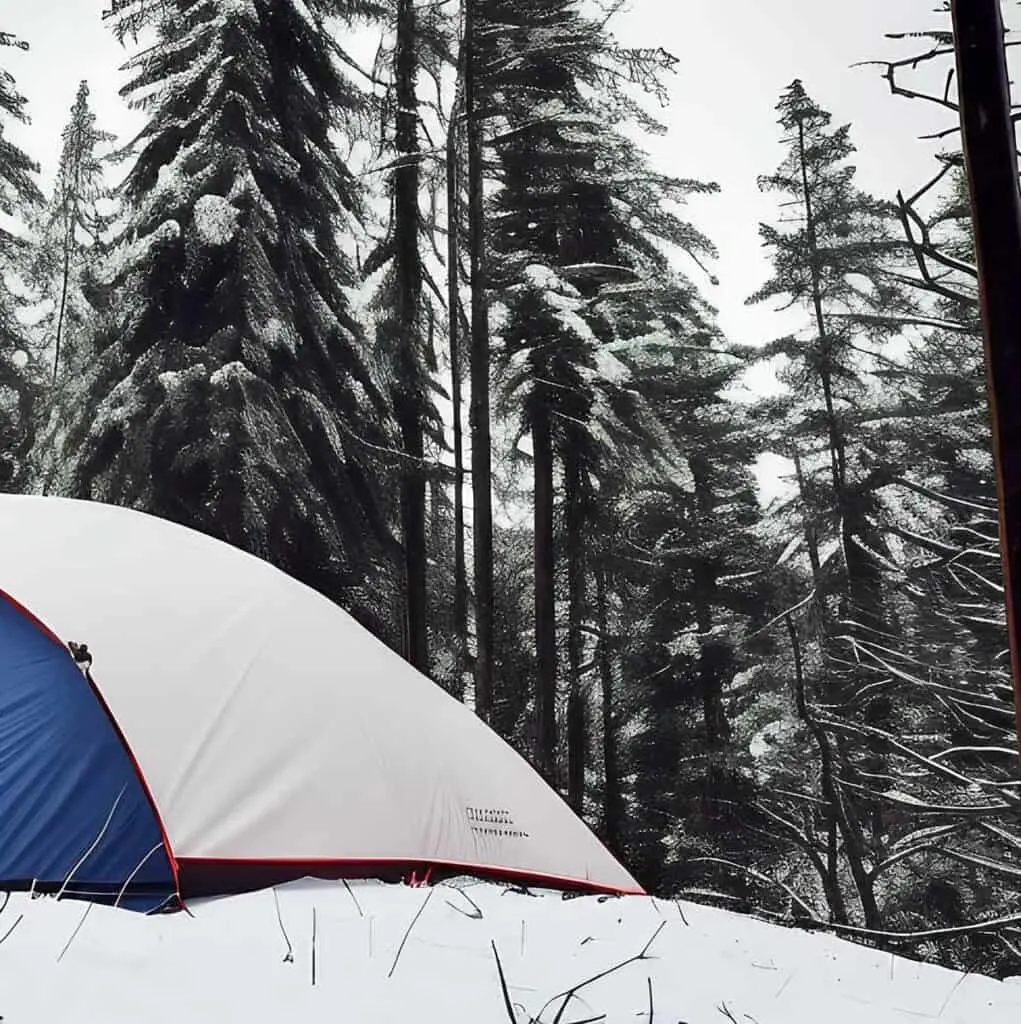
Good camping gear
Sleeping bags rated for zero-degree camping are an absolute must if you’re going to stay warm at night camping in winter weather. Be sure to get a bag slightly larger than what you think you’ll need so you can add layers of clothes or blankets while still being comfortable.
Good quality winter boots, hats, coats, and gloves are also essential for providing extra warmth when camping in cold weather. A good thermal underwear set should also be part of your camping wardrobe.
A 4-season tent can also greatly improve your comfort. These tents are designed to handle cold and snowy conditions, so they can help you retain more heat than a standard tent.
Tent heating – final thoughts
Camping doesn’t have to mean suffering through cold nights – there are plenty of ways to keep yourself warm, whether you have a power source or not. The best way to heat your tent will depend on factors such as your tent size and power options, but there’s a solution for every camping style.
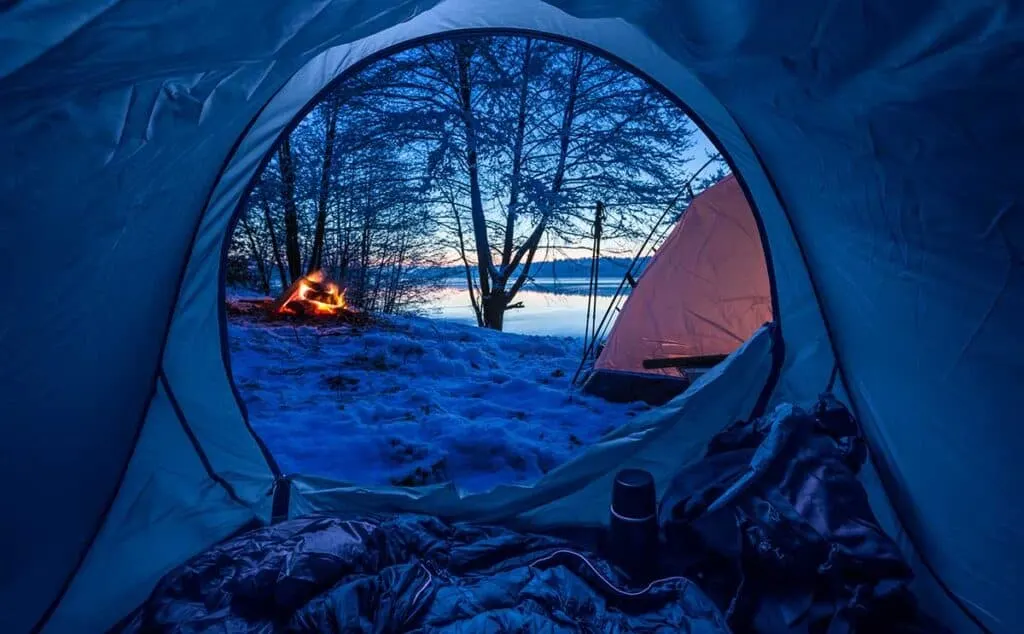
To sum it up again, here are some ideas we’ve covered:
Heating with electricity:
- Convection space heaters
- Radiant space heaters
- Electric blankets
Heating without electricity:
- Hot water bottles
- Wood stoves
- Heated rocks
- Chemical heating pads
- Body heat
- Extra insulation
- Quality camping gear
I can’t emphasize safety enough here, so I’ll say it again: plan ahead and make sure your intended heat source is safe for your circumstances. It’s not worth the risk if your heater creates carbon monoxide or fire hazards. There are a plethora of heating options available that pose little or no risk to you.
By following these simple tips, cold weather camping can be an enjoyable and rewarding experience without too much hassle. Happy winter camping!
